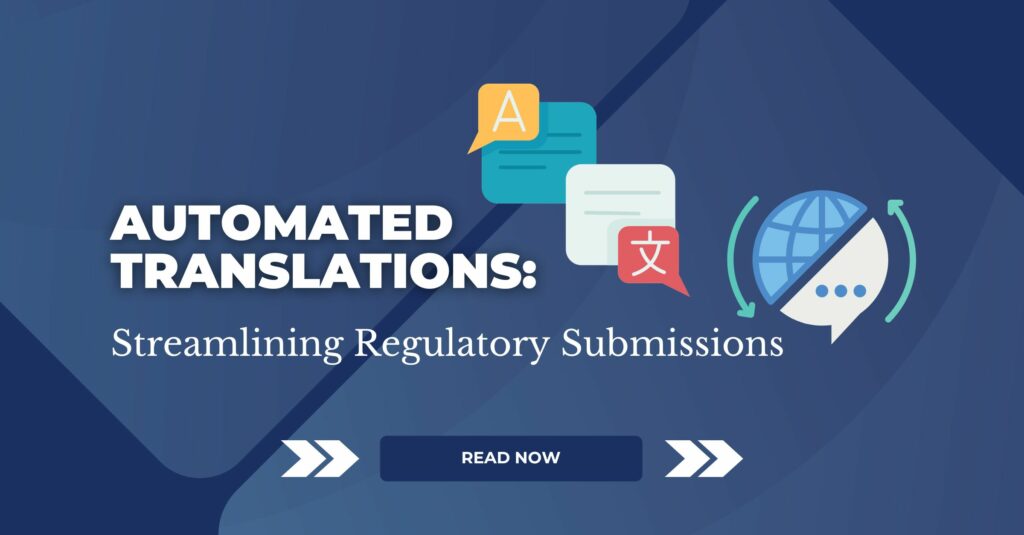
In the life sciences industry, accurate and efficient translations are required for products that are distributed across global markets. Organizations rely heavily on translation vendors, which come with significant time and financial investment. Operations are often siloed across departments and translations are being provided by multiple vendors, missing out on the opportunity to capitalizing on economies of scale. New software solutions are available that assist in the translation process to drive improvements in translation automation, timelines, and cost.
Using artificial intelligence (AI), machine learning (ML), and component content management systems (CCMS) translations can be optimized and organizations can streamline their operations. In this article, we explore how these technologies can streamline regulatory processes, reduce costs, and support organizations in preparing for evolving compliance requirements, including the shift towards electronic labeling (eLabeling).
The Role of AI , ML, and CCMS in Automating Translations
Automated translation technologies, using AI and ML, are transforming the way organizations manage multilingual content. These tools use natural language processing (NLP) to ingest structured and unstructured documents and convert them to content components. They are designed to handle multiple formats—such as Word, PDF, XML, and FHIR—and migrate organizations from documents to data stored as content components.
This opens the door to incorporate advanced features like automated translations, supported by translation memory and quality checks. The integration of AI and ML ensures that translations are fast, consistent, and maintain quality, consistency, and efficiency.
ComplianceAuthor AI is one such solution that leverages AI and ML to automate translations. By integrating NLP for translations, component content management (CCMS) for control, and generative AI for automated content generation, this system provides unique insights into both structured and unstructured content, ensuring accurate and complete translations.
A key component of these systems is translation memory, which stores previously translated text segments to be reused. This feature reduces redundancy and speeds up the translation process by enabling users to leverage existing content. This capability also ensures consistency and accuracy across documents. Moreover, ML algorithms continuously learn from user modifications, improving the quality of translations over time and minimizing the need for manual intervention.
Cost Savings and Efficiency with Automated Translations
One of the most compelling advantages of AI-driven translations is the significant cost savings it offers. Organizations can save millions by reducing their reliance on external vendors for translations. By bringing translation capabilities in-house, businesses can manage content more efficiently, ensuring faster turnaround times and lower costs.
Automated translations also enable scalability, allowing organizations to quickly adapt to changing market demands and regulatory requirements. ComplianceAuthor AI, for example, can support all document types and scale to various use cases beyond labeling. This flexibility is crucial in the life sciences industry, where regulations frequently change, and the need for rapid adaptation is high.
Moreover, automated translations reduce redundant tasks and streamline workflows. For instance, when creating new labels , the system can automatically recognize content in the source language, generate additional label outputs like FHIR or SPL, and translate them into multiple languages. This automation eliminates manual work, maintains audit trails, and tracks approval status, resulting in a more efficient and cost-effective process.
Third-party translation vendors won’t be completely forgone, but instead of using them to complete full translations, they will simplify provide verification. Even better, when products require label updates, only the translations for updated sections need verification, rather than the need to regenerate translations for the entire document. This is thanks to the blend of AI and ML technologies with a CCMS that breaks all your content into components rather than working as a whole.
Preparing for eLabeling Compliance
As the pharmaceutical industry moves towards standards like FHIR for electronic product information (ePI), automated translation solutions become even more valuable. For example, starting in January 2025, Jordan will require all products registered there to comply with ePI FHIR standards. This move underscores the importance of having robust translation capabilities that can handle the digital nature of eLabels and ensure compliance with new regulatory mandates.
Automated translation tools are particularly well-suited to support organizations in this transition. By utilizing AI and ML, these solutions can ensure that all content is accurately translated and formatted according to specific regulatory requirements. They can manage complex content elements, such as tables and images, to ensure comprehensive translations across all document components.
However, while eLabeling is becoming more prominent, many regulatory submissions—such as clinical labeling, global product labeling, and CMC documentation—still involve physical and digital outputs. Automated translations play a crucial role in these areas as well, ensuring that all content is compliant, accurate, and efficiently managed, regardless of the submission format.
Enhancing Regulatory Submissions Through Automation
Automated translation solutions provide several features that enhance regulatory submissions, making them more efficient and compliant:
- Support for Multiple Formats: These tools handle various document formats and content types, including text within tables and images, ensuring that all elements are accurately translated.
- Robust Quality Checks: Integrated quality checks and workflows ensure that there is no data loss from the source document to the newly generated document.
- Flexibility and Scalability: They offer scalability to accommodate different types of documents, from clinical trial reports to test specifications, without requiring extensive customization.
- Integration with Existing Systems: Modern translation solutions do not require organizations to replace or decommission their existing systems. Instead, they integrate seamlessly with existing systems, databases, and repositories.
By automating translations, organizations can significantly improve their content generation timelines and reduce the overall translation spend
Maintaining Compliance and Audit Trails with Automation
When leveraging tools that use automation to optimize process, compliance is at the heart of the discussion. The platforms that accompany the automated translation tools can be GxP verified and offer robust tracking and annotation features, capturing all changes in a secure audit trail. This ensures that every modification is transparent, traceable, and compliant with company standards throughout the document lifecycle.
Conclusion
AI-driven automated translations are transforming the way the life sciences industry manages content, particularly for eLabeling. By leveraging AI and ML, organizations can achieve significant cost savings, improve efficiency, and ensure compliance. ComplianceAuthor AI offers a comprehensive solution that integrates seamlessly with existing systems, supports various document types, and enhances translation capabilities over time. As the industry continues to evolve, adopting automated translations will be key to staying ahead in an increasingly competitive market.
By adopting ComplianceAuthor AI, organizations can bring translation capabilities in-house, reduce costs, and streamline their workflows, ultimately leading to more efficient, compliant, and scalable operations.
Want to introduce automated translations into your labeling and regulatory submission workflow? Contact Glemser today to get started.


